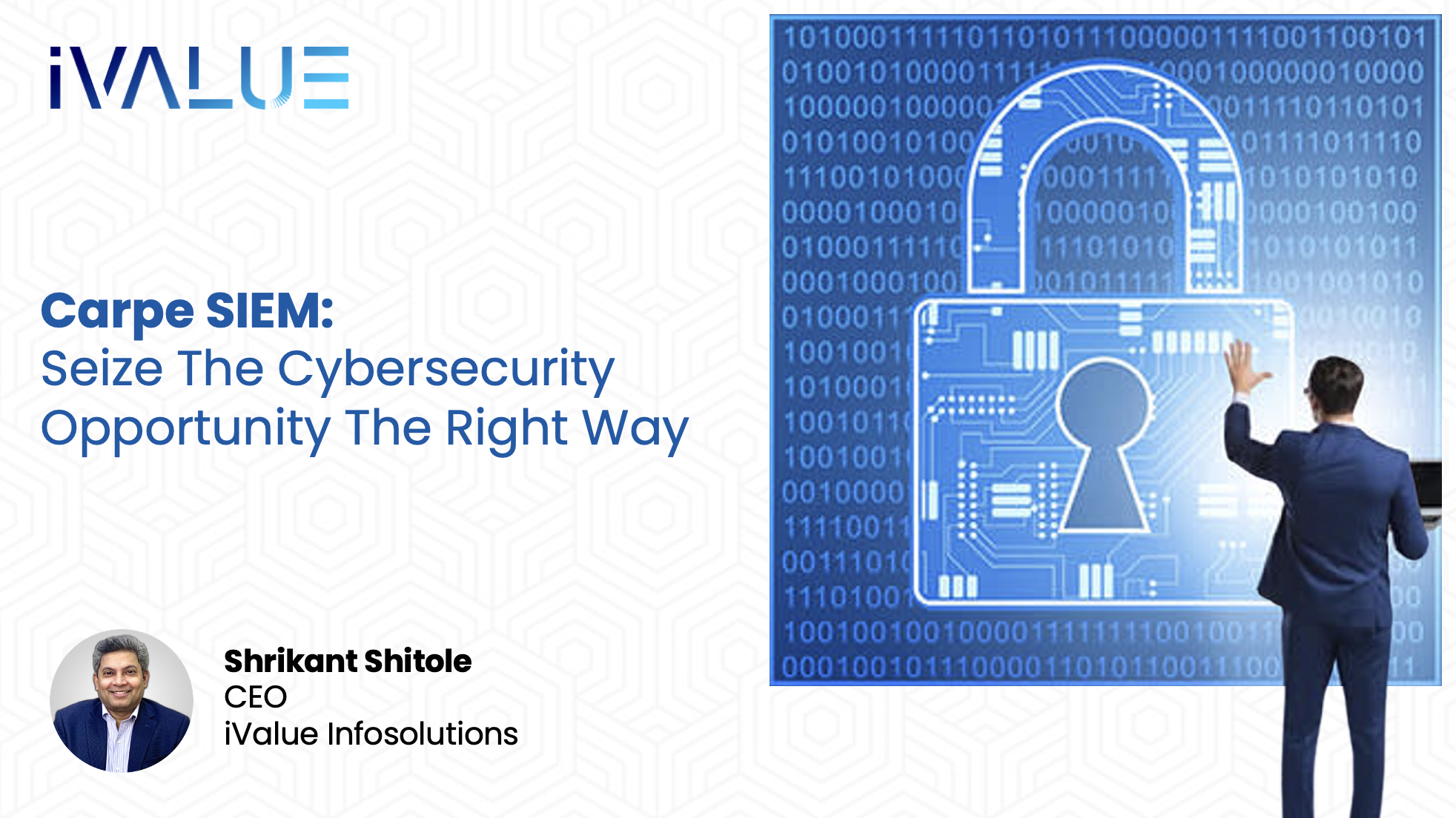Carpe SIEM: Seize The Cybersecurity Opportunity The Right Way - Shrikant Shitole, CEO, iValue Infosolutions

When business leaders and heads of state met at the World Economic
Forum’s Annual Meeting 2023 in Davos, cybersecurity was one of the key discussion
topics. As cyberattacks get increasingly sophisticated and frequent, INTERPOL’s
Secretary-General Jürgen Stock called it “a global threat” and said it required
a global response.
This alarm is not misplaced.
In 2021, American financial enterprises lost close to $1.2 billion in
costs due to ransomware attacks alone, almost 200 per cent over 2020’s figures.
A recent Cybersecurity Ventures report predicted that the global annual cost of
cybercrime is likely to cross $8 trillion.
These astronomical figures reemphasize why private and public
institutions should deploy proactive cybersecurity solutions that provide more
advanced detection and response capabilities.
Now, this does not mean that these entities were taking their
cybersecurity lightly. Many already had set up Security Information and Event
Management (SIEM) systems to safeguard their digital assets. However, the
evolving threat landscape requires them to think several steps ahead of
cybercriminals, who are constantly developing newer ways to breach through
these networks.
This has compelled companies to reevaluate their SIEM systems to ensure
they are not locking the stable doors after the horses have bolted.
Fortunately, it is not as daunting as it appears.
Revisiting The Basics
Typically, SIEM deployments are preemptive in nature, attempting to
identify potential insider threats before they occur. Though these are often
caused by negligence rather than malicious intent, it does not have any bearing
on the final damage.
By identifying threats and monitoring them using Internet of Things
technology, companies can make timely decisions about the right course of
action. This could be across their varied architecture – from on-site networks
to a multi-cloud environment.
While adopting these measures will help them stay a step ahead of
cybercriminals, they need to embrace new-age technologies like AI and ML to
stay ahead of the curve.
Why AI And ML?
Conventional SIEM systems are well-equipped to manage and analyze data
about security incidents. However, given the rapidity with which attack vectors
evolve, they might face latency issues.
Moreover, since these systems work on rule-based methods, they are not
very adept at detecting unidentified threats that fall outside these
parameters. As companies continue to generate a larger quantum of information
from various channels, traditional SIEM systems might be unable to process this
data in real time. What makes this worrying is that even a millisecond gap can
be disastrous while dealing with cyber threats.
This is where AI and ML can step in. Their inherent ability to
self-learn and do it promptly by analyzing large data sets can offer businesses
SIEM alternatives to protect their networks from emerging cyber threats.
AI and ML can also identify patterns to predict potential threats by
analyzing vast amounts of data at fast speeds in real time. Speedy detection is
the key to faster mitigation of these threats, safeguarding companies from
potential financial and reputational issues. Companies can leverage the power
of these data-driven insights to uncover and react to threats more effectively
to evolving cyberattacks.
Mapping A Relevant SIEM Strategy
To harness the next generation of SIEM alternatives, companies need to
map their cybersecurity so that it is future-proofed and can keep pace with a
complex and evolving digital landscape. This will also help them optimize their
budget without overshooting it and maximize the security infrastructure.
The first step in this direction is making a checklist of what matters
most depending on the company’s IT and business roadmap. For instance, if they
can decide how much they want to earmark for digitization or data backup and
then move backwards to see how to align this with their security policies.
This will help companies set down a well-defined foundation for their
cybersecurity protocols. They can then set milestones along the way, which
cover setting up firewalls, endpoint detection and response points, and
periodic workforce training. Setting up these goalposts and adhering to them
religiously will reduce the risk of falling prey to cyberattacks.
Adopting this strategy will help companies to achieve one more goal—of
not exhausting their depleting IT budgets while managing the constant barrage
of cyber threats. The IT team can then devote their time and energies to
identifying pivotal threats likely to penetrate their defence structure and
then plug those gaps.
Companies can also reap the benefits of AI and ML to automate repetitive
tasks and streamline incident response processes. These can be integrated with
existing solutions to build a comprehensive security ecosystem that can adapt
to emerging threats.
Moreover, by relying on AI and ML companies can bridge the current
talent gap that is currently existing in the marketplace. For overworked
security teams, it offers a practical way forward.
One hundred per cent of respondents in a Wakefield Research study stated
that increased automation in the security operations centre would help them
staffing gaps in their teams. Automation is a guardrail against the vagaries of
human resources challenges, especially for companies with smaller IT
teams.
By setting up a next-generation cybersecurity strategy, companies can
reduce the time to detect and respond to threat incidents. This can minimize
the harm to their financial standing and branding, strengthening their
cybersecurity posture.



